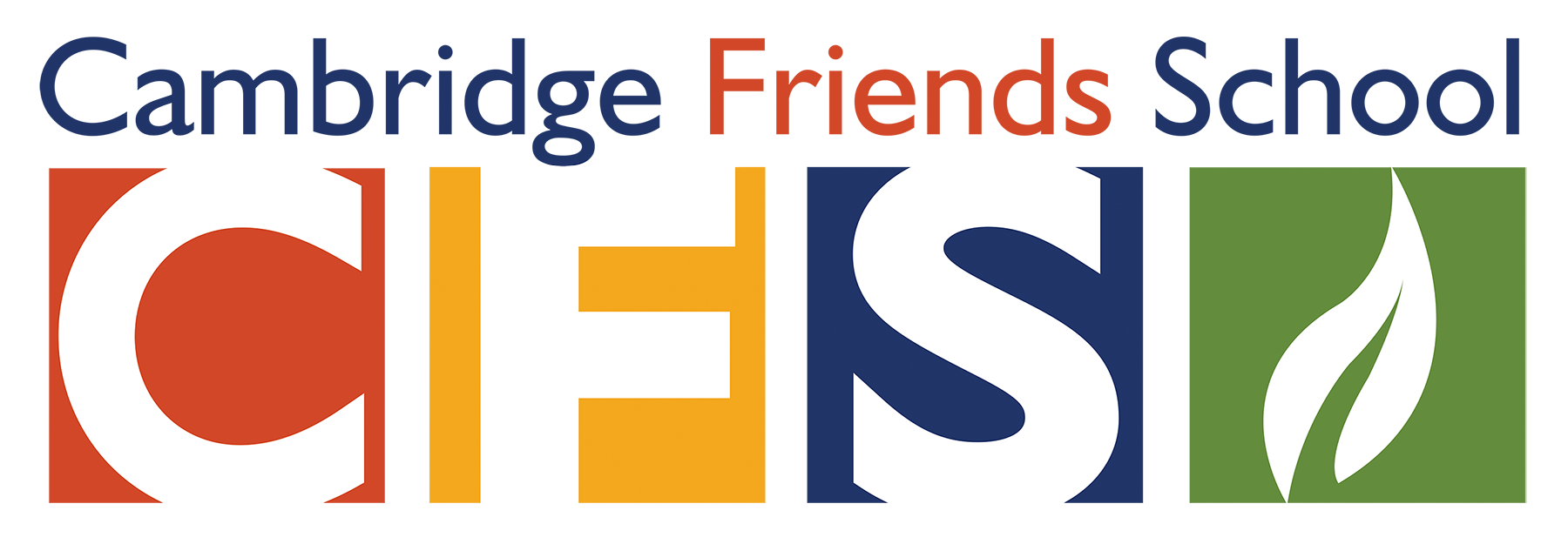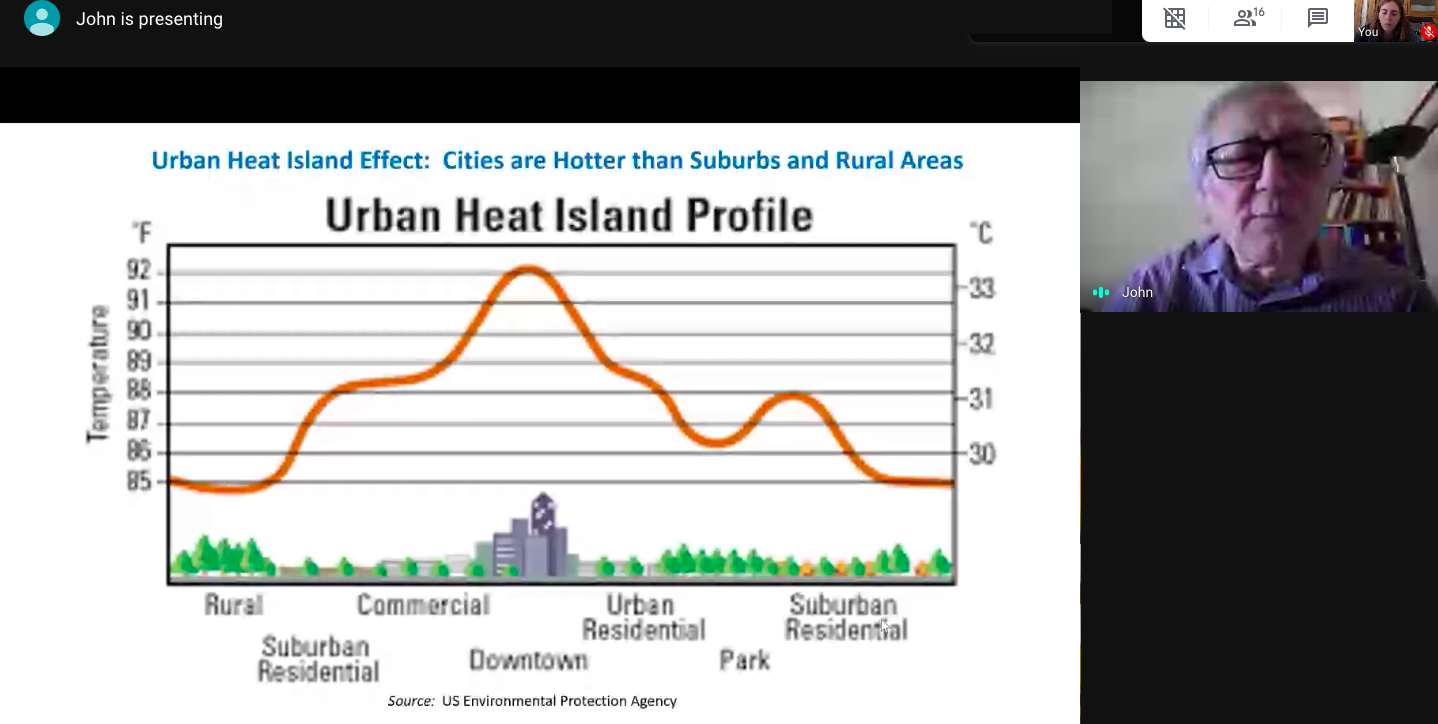Grade 7 Online Curriculum
Humanities
Seventh-graders attend four Google Meets a week with the option to attend one drop-in session per week. Utilizing Google Classroom, students are also able to access posted resources and assignments.
Seventh-grade students participated in a virtual trip to D.C. in lieu of their originally planned visit. Students were able to tour the White House, Capitol, and Supreme Court buildings and explore both their history and architectural design. Students also visited a museum of their choice from a curated list that included the American Red Cross Museum, the National Museum of Women in the Arts, Folger’s Shakespeare Theater, and the International Spy Museum, among others. Each student chose an exhibit to present to the class and became a virtual tour guide, sharing interesting facts and offering a glimpse into the museum.
In conjunction with the lobbying work being done in science, students also read several articles about climate change and social justice and discussed the implications of giving a voice to all stakeholders involved. They also looked at the recent literature around the effect of the pandemic on levels of air and water pollution and considered what can be learned about the kinds of policy changes that could have a lasting impact on reversing the current climate change trends around the globe.
Seventh-grade’s final writing unit explored poetry as a spare and unique way to communicate about and describe feelings, sensory images, moods, and ideas. Students read the works of a wide variety of poets including Billy Collins, Mary Oliver, Sharon Olds, and Nikki Grimes, and tried writing their own poems. In book groups, students are reading Hush, by Jacqueline Woodson, an American writer named the National Ambassador for Young People’s Literature for 2018 by the Library of Congress. The story explores a young girl’s search to find herself after she is forced to take on a new identity under the Witness Protection Program. Students then explored how they define themselves in the absence of friends and families, comparing their own experiences with social distancing and the experience of the main character, Evie, who has to leave her family and friends behind.
Math
Seventh-grade students attend four Google Meets with the option to attend an additional drop-in class each week. Utilizing a rigorous, differentiated, research-based curriculum, GO MATH!®, as the foundation of the course, , students access assignments in Google Classroom.
As an extension to their unit on Geometry, students participated in a digital modeling project adapted from Teaching by Design | Frank Lloyd Wright Trust to creatively put what they learned to use. Students were tasked with creating a unique architectural model for a fictitious client by using Tinkercad, Google SketchUp or an online 3-D modeling program of their choice – a number of students opted to use Minecraft! Clients ranged from a small business owner redesigning a coffee shop to a town constructing a historical museum to a family requiring handicap accessibility in their new home. Students were asked to consider the elements of architectural design, including balance, color, contrast, line, symmetry, shape, patterns, repetition, and rhythm in their models. At the end of the project, students enthusiastically shared their presentations on Google Meet with the class.
Completing their last unit on Statistics, students learned how statistics can be used to gain information about a population by examining a sample of the population. They considered the differences between random, non-random, and biased samples; used data from a random sample to draw inferences about a population; and used measures of center and variability for numerical data to draw comparative inferences about two populations.
In order to analyze data sets and use statistical measures to compare populations, students constructed dot plots and box plots. Students then compared the shape, center, and spread of the dot plots to numerically compare the calculated values related to center and spread. For example, students compared data about the number of minutes a seventh-grade class spent exercising compared to the number of minutes spent playing video games. Students were able to determine that the means of the two data sets differed by about 1.4 times the variability of the two data sets. Students also learned to calculate the median, interquartile ranges and variability between box plots to investigate patterns within a given population.
Science
Seventh-grade students continue to explore how Earth’s climate is shaped and formed and the causes and impacts of climate change. Through Google Meet, students take part in synchronous learning three times a week with one optional drop-in class per week. This includes meeting with local scientific experts like Erik Peckar, from Vineyard Power, to learn about his work to set up the first offshore wind farm between the Cape and Martha’s Vineyard or Terry Bastian, who designed the wetland at Danehy Park. Students also have one-on-one meeting times to check-in, and in Google Classroom, students have accessed materials including the Climate Action Rebate Act. Working with Alicia Cannon from Friends Committee on National Legislation (FCNL), students further connected their learning and citizen science work to lobbying and were able to virtually lobby Congresswoman Ayanna Pressley’s office. Click here to learn more about their lobbying efforts.
Art
Students access assignments with instructions and resources posted in Google Classroom, and join a Zoom meeting once a week. Students were mailed kits to ensure each student had access to the necessary materials for their projects. Concepts tackled during remote learning include shading to create an optical illusion, observational drawing or painting, making an abstract composition by rearranging text, and examining the abstract color field paintings of Alma Thomas. These projects were easier to do at home, while still helping students to sharpen their fine motor skills, hone-in on their problem-solving and planning abilities, and continue to build student’s confidence in their own abilities. Responding to student interests, optional assignments including sewing do-it-yourself safety masks, homemade salt-dough clay, and making paper beads have been shared to encourage ongoing creativity.
Physical Education
Students have been accessing age-appropriate exercise videos and suggested activities via Google Classroom, in addition to attending a Google Meet once per week. Online learning provides students with resources to promote independence, remain active, and maintain overall health and wellness during this challenging transition. Home fitness routines, agility activities, yoga, dance, backyard games, jump rope, shadow boxing, and wellness videos encourage students to think creatively about movement and wellness options during this time. Weekly check-ins provide invaluable opportunities to work-out together and engage with students to gauge coping skills during this challenging experience. Students also share alternative ways that they remain active with their families.
Drama
Seventh-graders have two Google Meets per week that entail one-to-one online coaching sessions for their monologue work, which includes acting for the camera versus the stage. Students have been selecting pieces from literature, plays, and musicals that have monologues or a scene that speaks to them creatively. Text analysis has been introduced in its formal capacity and students are learning the importance of creating a history for their characters.
Spanish
Students attend Spanish class via Google Meet once per week for a more robust and immersive experience. Students continue to review basic structures, while adopting new vocabulary and grammar that serves to broaden speaking, reading, listening, and writing of Spanish. Integrating online tools for a more engaging experience, students use various apps such as Word Reference, Nearpod, Kahoot, Mentimeter, and Gimkit, while also accessing assignments in Google Classroom.
Seventh grade has been reviewing the verbs “ser, estar, and tener,” how to formulate negative sentences, increasing their vocabulary by learning new nouns, verbs, and adjectives, and reviewing the articles “el, la, los, and las.” Seventh-grade students have been practicing how to say dates (day, month, year), numbers, current events of Spanish speaking countries, and seasons. Students are also practicing interrogative words for questions such as “who?”, “where?”, “when?”, and “how?” and are also learning the difference when using “que and cual.” Reviewing reports of current events in Spanish, students further immerse themselves in the Spanish language.
As a culmination of their learning, students have been working on a project called “The End of Term Mini-Game,” in which they create a board game and write all of the content taught and learned in class, while adding more grammar and vocabulary aspects based on their personal interests.



